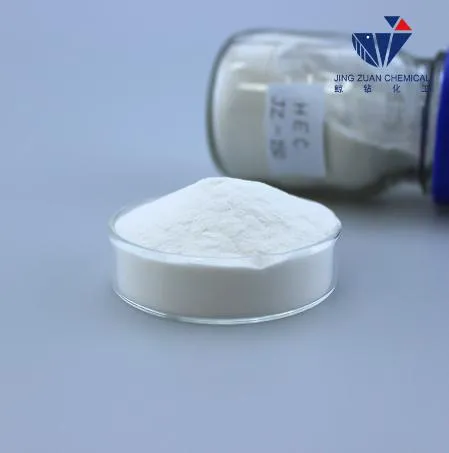
Nov . 25, 2024 10:15 Back to list
Methyl Hydroxyethyl Cellulose (MHEC): Advantages and Applications of Multifunctional Thickener
When it comes to versatile and effective thickening agents, methyl hydroxyethyl cellulose (MHEC) stands out as a top choice in various industries. Known for its remarkable properties and compatibility with other chemicals, this cellulose derivative offers unique advantages in applications ranging from construction to cosmetics. In this article, we’ll explore what hydroxyethyl cellulose is, how to dissolve it, and its solubility in ethanol, showcasing why MHEC is vital for your formulations.

What is Hydroxyethyl Cellulose?
Hydroxyethyl cellulose (HEC) is a non-ionic, water-soluble polymer derived from cellulose, a naturally occurring biopolymer. Modified to enhance its properties, methyl hydroxyethyl cellulose combines the best of cellulose with the functional benefits that modern formulations demand. It boasts a unique ability to provide both viscosity and stability, making it an ideal choice for a variety of applications including paints, adhesives, and personal care products. Its non-toxic nature makes it a safe option for consumers across multiple industries, ensuring compliance with health and safety regulations.
How to Dissolve Hydroxyethyl Cellulose
Dissolving hydroxyethyl cellulose may seem daunting, but with the right approach, it can be an effortless process. To achieve optimal solubility, it is essential to follow a few simple steps. Start by gradually adding MHEC to cold water while stirring continuously to avoid clumping. It is crucial to maintain a consistent speed in mixing to ensure even distribution. For faster dissolution, you can pre-hydrate the cellulose by mixing it with a small amount of glycerin or another compatible solvent before adding it to water. This method enhances the interaction between the polymer and the solvent, resulting in a smooth and homogenous solution.
Hydroxyethyl Cellulose Solubility in Ethanol
One notable characteristic of methyl hydroxyethyl cellulose is its solubility profile. MHEC is not soluble in ethanol, which is an important consideration for formulators looking to achieve specific results. While ethanol is known for its ability to dissolve many organic compounds, MHEC's unique structure allows it to thrive in aqueous conditions, making water the preferred solvent for this versatile polymer. This established solubility property offers formulators an advantage, as it permits the creation of stable emulsions and suspensions, particularly in applications where water-based systems are preferred.
Why Choose Methyl Hydroxyethyl Cellulose?
Methyl hydroxyethyl cellulose is more than just a functional ingredient; it’s a powerhouse that provides a wealth of benefits. From enhancing the texture of skincare products to improving the stability of paints, MHEC finds its application across numerous industries due to its unique properties. By choosing methyl hydroxyethyl cellulose for your formulations, you ensure a high level of performance, safety, and compatibility that can elevate your products to the next level.
Experience the versatility and effectiveness of methyl hydroxyethyl cellulose today! Whether you're in the cosmetics, construction, or food industries, incorporating MHEC can lead to improved results and customer satisfaction. Unlock the potential of your formulations with MHEC – the ultimate choice for modern applications.
In conclusion, hydroxyethyl cellulose is a dynamic ingredient that is essential for innovation in various fields. Whether you need to know how to dissolve hydroxyethyl cellulose or understand its solubility in ethanol, this incredible compound is ready to meet your needs. Don't miss out on the benefits of MHEC. Make it part of your formulations today!
-
Versatile Hpmc Uses in Different Industries
NewsJun.19,2025
-
Redispersible Powder's Role in Enhancing Durability of Construction Products
NewsJun.19,2025
-
Hydroxyethyl Cellulose Applications Driving Green Industrial Processes
NewsJun.19,2025
-
Exploring Different Redispersible Polymer Powder
NewsJun.19,2025
-
Choosing the Right Mortar Bonding Agent
NewsJun.19,2025
-
Applications and Significance of China Hpmc in Modern Industries
NewsJun.19,2025







